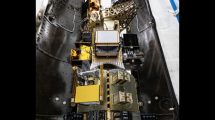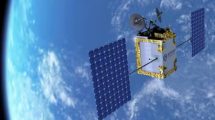 AsiaSat, a satellite operator in Asia, has announced that following good progress made in the manufacturing and testing, the AsiaSat 8 satellite is on target for launch in April next year.
AsiaSat, a satellite operator in Asia, has announced that following good progress made in the manufacturing and testing, the AsiaSat 8 satellite is on target for launch in April next year.
With the successful completion of all the reference performance testing of the spacecraft’s payload and bus subsystems, AsiaSat 8 commenced SCTV (spacecraft thermal vacuum) testing, which is expected to be completed in November. SCTV testing is a major programme milestone that validates a spacecraft’s performance in a simulated space vacuum environment and extreme temperatures.
AsiaSat 8 will be co-located with AsiaSat 3S/AsiaSat 7 at the orbital location of 105.5 degrees East, a slot where AsiaSat has established networks providing service to the Asia-Pacific region since 1990.
AsiaSat 8 will be launched by the SpaceX Falcon 9 rocket from Cape Canaveral in the United States.
“We are pleased to have achieved significant progress for our AsiaSat 8 programme. AsiaSat 8 will bring new Ku-band capacity to AsiaSat 3S/AsiaSat 7’s orbital location of 105.5 degrees East, an established AsiaSat slot for DTH (direct-to-home), data broadcasting and telecommunications services. This new satellite will help meet the increasing demand for quality capacity from high growth markets in Asia and the Middle East,” said William Wade, President and CEO of AsiaSat.
AsiaSat 8, a Space Systems/Loral 1300 satellite, will have four Ku-band beams and one Ka-band beam. AsiaSat 8’s high-powered Ku-band coverage will be serving China, India, the Middle East and South East Asia. The satellite is equipped with inter-beam switching to meet specific customer requirements. With its Ku-band TWTAs at 210 watts, the most powerful amplifiers ever launched in Asia, AsiaSat 8 will offer the highest downlink EIRP in the region.












Add Comment